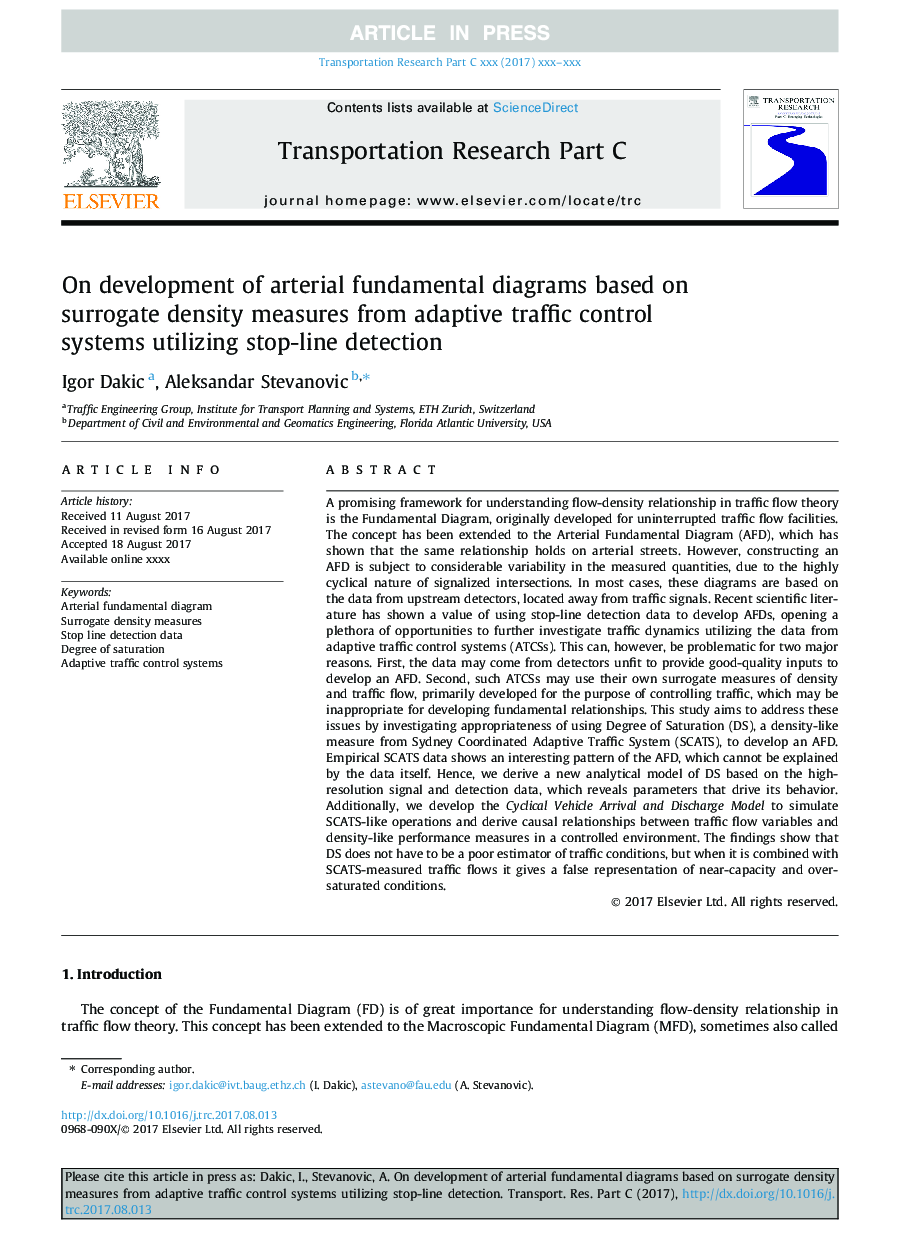| Article ID | Journal | Published Year | Pages | File Type |
|---|---|---|---|---|
| 8947471 | Transportation Research Part C: Emerging Technologies | 2018 | 18 Pages |
Abstract
A promising framework for understanding flow-density relationship in traffic flow theory is the Fundamental Diagram, originally developed for uninterrupted traffic flow facilities. The concept has been extended to the Arterial Fundamental Diagram (AFD), which has shown that the same relationship holds on arterial streets. However, constructing an AFD is subject to considerable variability in the measured quantities, due to the highly cyclical nature of signalized intersections. In most cases, these diagrams are based on the data from upstream detectors, located away from traffic signals. Recent scientific literature has shown a value of using stop-line detection data to develop AFDs, opening a plethora of opportunities to further investigate traffic dynamics utilizing the data from adaptive traffic control systems (ATCSs). This can, however, be problematic for two major reasons. First, the data may come from detectors unfit to provide good-quality inputs to develop an AFD. Second, such ATCSs may use their own surrogate measures of density and traffic flow, primarily developed for the purpose of controlling traffic, which may be inappropriate for developing fundamental relationships. This study aims to address these issues by investigating appropriateness of using Degree of Saturation (DS), a density-like measure from Sydney Coordinated Adaptive Traffic System (SCATS), to develop an AFD. Empirical SCATS data shows an interesting pattern of the AFD, which cannot be explained by the data itself. Hence, we derive a new analytical model of DS based on the high-resolution signal and detection data, which reveals parameters that drive its behavior. Additionally, we develop the Cyclical Vehicle Arrival and Discharge Model to simulate SCATS-like operations and derive causal relationships between traffic flow variables and density-like performance measures in a controlled environment. The findings show that DS does not have to be a poor estimator of traffic conditions, but when it is combined with SCATS-measured traffic flows it gives a false representation of near-capacity and over-saturated conditions.
Keywords
Related Topics
Physical Sciences and Engineering
Computer Science
Computer Science Applications
Authors
Igor Dakic, Aleksandar Stevanovic,
